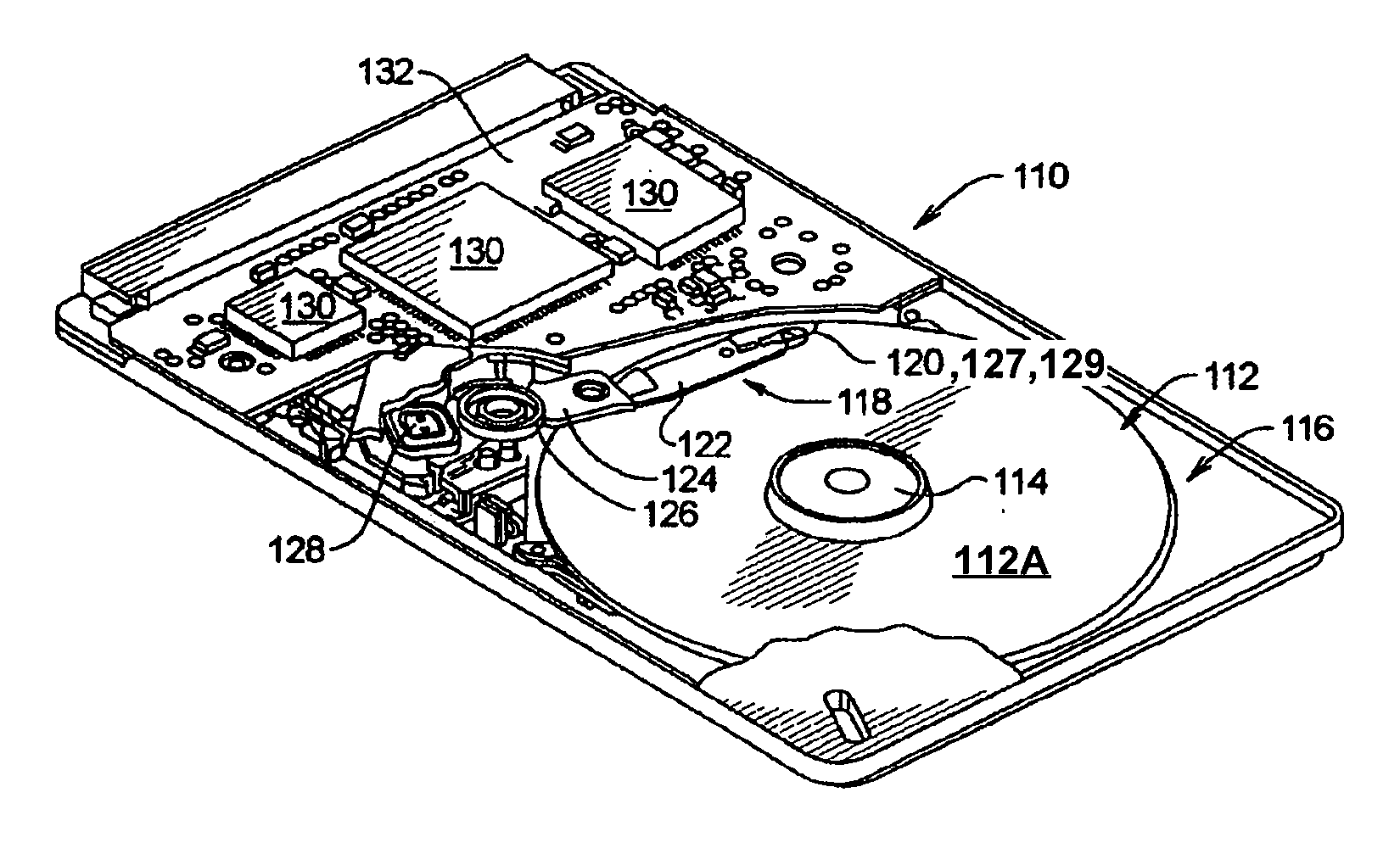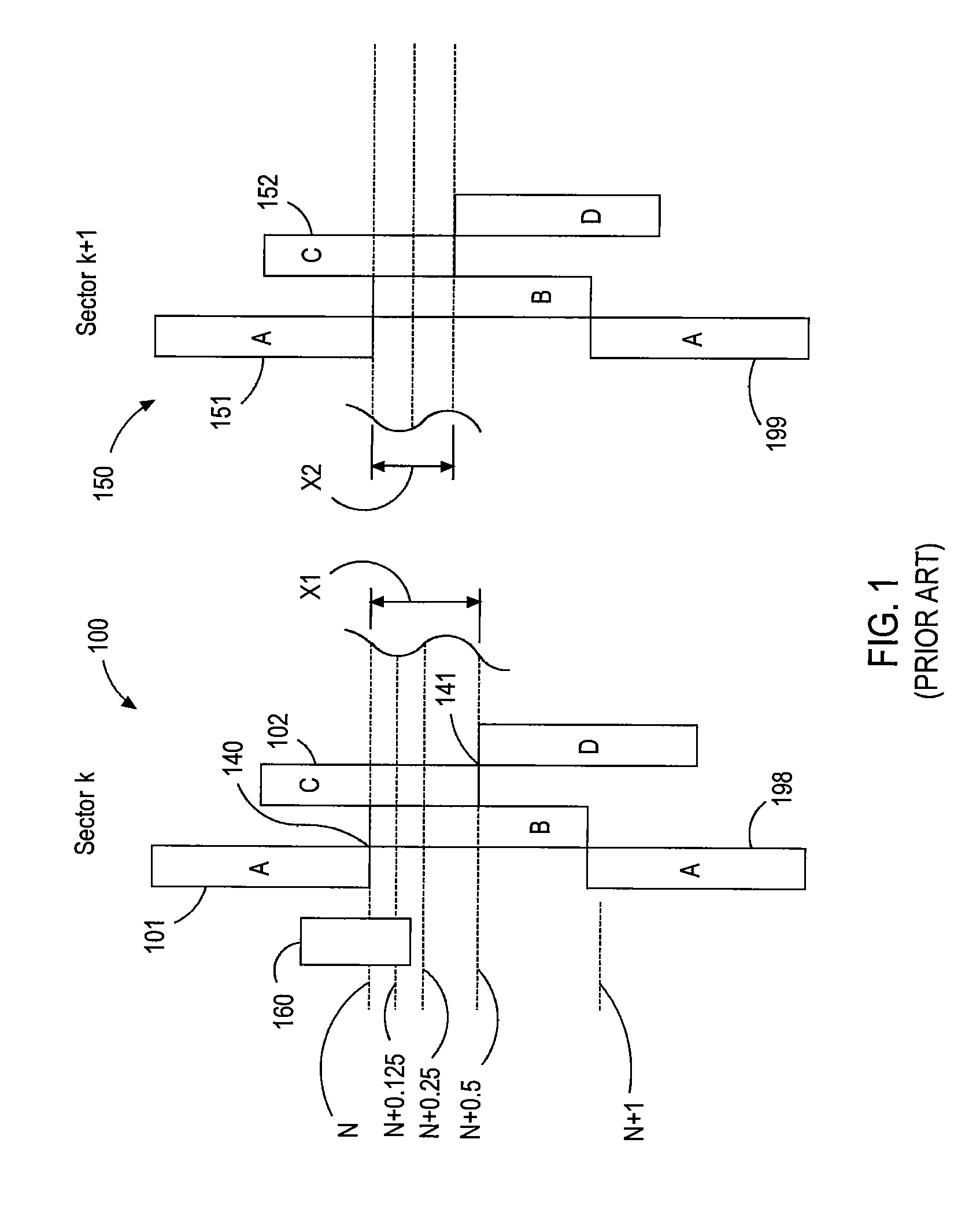Position error signal demodulation with target-based blending
a position error and target-based blending technology, applied in the field of disk drives, can solve the problems of limited calibration utility, stitching error, and discontinuity between
- Summary
- Abstract
- Description
- Claims
- Application Information
AI Technical Summary
Benefits of technology
Problems solved by technology
Method used
Image
Examples
Embodiment Construction
[0027]FIG. 3 is a perspective view of a disk drive 110 that can benefit from embodiments of the invention as described herein. For clarity, disk drive 110 is illustrated without a top cover. Disk drive 110 includes a storage disk 112 that is rotated by a spindle motor 114. Spindle motor 114 is mounted on a base plate 116. An actuator arm assembly 118 is also mounted on base plate 116, and has a slider 120 mounted on a flexure arm 122 with a read head 127 and a write head 129. Flexure arm 122 is attached to an actuator arm 124 that rotates about a bearing assembly 126. Voice coil motor 128 moves slider 120 relative to storage disk 112, thereby positioning read and write heads 127 and 129 over the desired concentric data storage track disposed on the surface 112A of storage disk 112. Spindle motor 114, the read and write heads 127 and 129, and voice coil motor 128 are coupled to electronic circuits 130, which are mounted on a printed circuit board 132. The electronic circuits 130 incl...
PUM
| Property | Measurement | Unit |
|---|---|---|
| weights | aaaaa | aaaaa |
| width | aaaaa | aaaaa |
| constant angular velocity | aaaaa | aaaaa |
Abstract
Description
Claims
Application Information
 Login to View More
Login to View More - R&D
- Intellectual Property
- Life Sciences
- Materials
- Tech Scout
- Unparalleled Data Quality
- Higher Quality Content
- 60% Fewer Hallucinations
Browse by: Latest US Patents, China's latest patents, Technical Efficacy Thesaurus, Application Domain, Technology Topic, Popular Technical Reports.
© 2025 PatSnap. All rights reserved.Legal|Privacy policy|Modern Slavery Act Transparency Statement|Sitemap|About US| Contact US: help@patsnap.com



